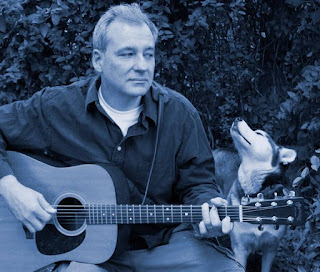A hefty excise tax on wholesale tobacco products sold in the Matanuska Susitna Borough is under scrutiny. At last [Sept 15] week’s meeting of the Matanuska Susitna Borough Assembly, e -cigarette users spoke out against the new tax.
The new ordinance went into effect when it was passed in August. It puts a a 55 % tax on wholesale purchases of e cigarette products in the Mat Su Borough. That Borough ordinance, was followed by outcries from owners of fledgling ” vape ” shops. Those are the retailers providing the products used in e-cigarettes.
“Putting them out of business, running them out of the city, is not something that is going to help smoking, it’s not something that is going to help the economy, and you will lose the sales tax revenue you are currently generating from these businesses.”
That’s e-cig smoker Mark Sowers. The tax is passed onto consumers through the retail price of the products. Mat Su Borough Assemblyman Jim Sykes says there’s good reason for the high tax.
“The nicotine juices cost very little on wholesale and the markup is pretty high. so 55%…It’s 90 % in Minnesota, so there’s a lot of money being made here, that’s why shops are opening like crazy all over the country.”
Sykes says money from the tax goes into the Borough’s general fund, and is to be used for anti smoking education, although the ordinance is not specific as to how the tax will be spent. Sykes says the high tax could help to sway young people from buying tobacco products.
The legislation, however, has raised complaints from e-cigarette smokers and owners of vape shops. It also has ping – ponged from approval to mayoral veto to override and then back to the Assembly, where it showed up on the agenda last week, waiting for an amendment that never materialized.
At the meeting , Ashley Peltier, applauded the Assembly’s action, saying that the ordinance’s 55 % tax should stand.
“Presently, there is no oversight over these products. Therefore, there is no way the public health, the medical community or consumers to know exactly what chemicals are contained in or emitted from these devices, or what the short and long term health implications may be.
But a greater number of smokers came out swinging at the meeting, and claimed that “vaping”, or smoking e cigarettes, has helped them stop smoking tobacco cigarettes. Many, like Mike McInnes, disputed the fact that vaping causes the same kind of damage that smoking tobacco does.
“If anything should be taxed, it should be the nicotine. We should not be punishing people that are vaping at zero milligram nicotine. We should not be taxing the equipment itself, especially the batteries that can be bought at all kinds of different places. ”
According to Assemblyman Sykes, the ordinance is copied from one now in effect in Juneau, only with a ten percent higher tax rate.
Resource : http://www.alaskapublic.org/2015/09/22/e-cig-tax-vexes-vapers/
The new ordinance went into effect when it was passed in August. It puts a a 55 % tax on wholesale purchases of e cigarette products in the Mat Su Borough. That Borough ordinance, was followed by outcries from owners of fledgling ” vape ” shops. Those are the retailers providing the products used in e-cigarettes.
“Putting them out of business, running them out of the city, is not something that is going to help smoking, it’s not something that is going to help the economy, and you will lose the sales tax revenue you are currently generating from these businesses.”
That’s e-cig smoker Mark Sowers. The tax is passed onto consumers through the retail price of the products. Mat Su Borough Assemblyman Jim Sykes says there’s good reason for the high tax.
“The nicotine juices cost very little on wholesale and the markup is pretty high. so 55%…It’s 90 % in Minnesota, so there’s a lot of money being made here, that’s why shops are opening like crazy all over the country.”
Sykes says money from the tax goes into the Borough’s general fund, and is to be used for anti smoking education, although the ordinance is not specific as to how the tax will be spent. Sykes says the high tax could help to sway young people from buying tobacco products.
The legislation, however, has raised complaints from e-cigarette smokers and owners of vape shops. It also has ping – ponged from approval to mayoral veto to override and then back to the Assembly, where it showed up on the agenda last week, waiting for an amendment that never materialized.
At the meeting , Ashley Peltier, applauded the Assembly’s action, saying that the ordinance’s 55 % tax should stand.
“Presently, there is no oversight over these products. Therefore, there is no way the public health, the medical community or consumers to know exactly what chemicals are contained in or emitted from these devices, or what the short and long term health implications may be.
But a greater number of smokers came out swinging at the meeting, and claimed that “vaping”, or smoking e cigarettes, has helped them stop smoking tobacco cigarettes. Many, like Mike McInnes, disputed the fact that vaping causes the same kind of damage that smoking tobacco does.
“If anything should be taxed, it should be the nicotine. We should not be punishing people that are vaping at zero milligram nicotine. We should not be taxing the equipment itself, especially the batteries that can be bought at all kinds of different places. ”
According to Assemblyman Sykes, the ordinance is copied from one now in effect in Juneau, only with a ten percent higher tax rate.
Resource : http://www.alaskapublic.org/2015/09/22/e-cig-tax-vexes-vapers/


















